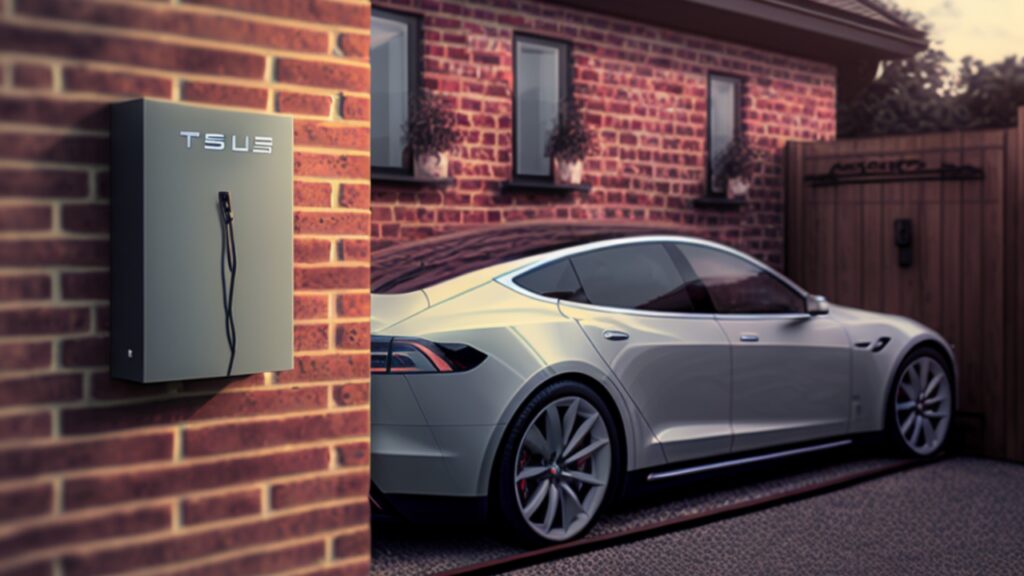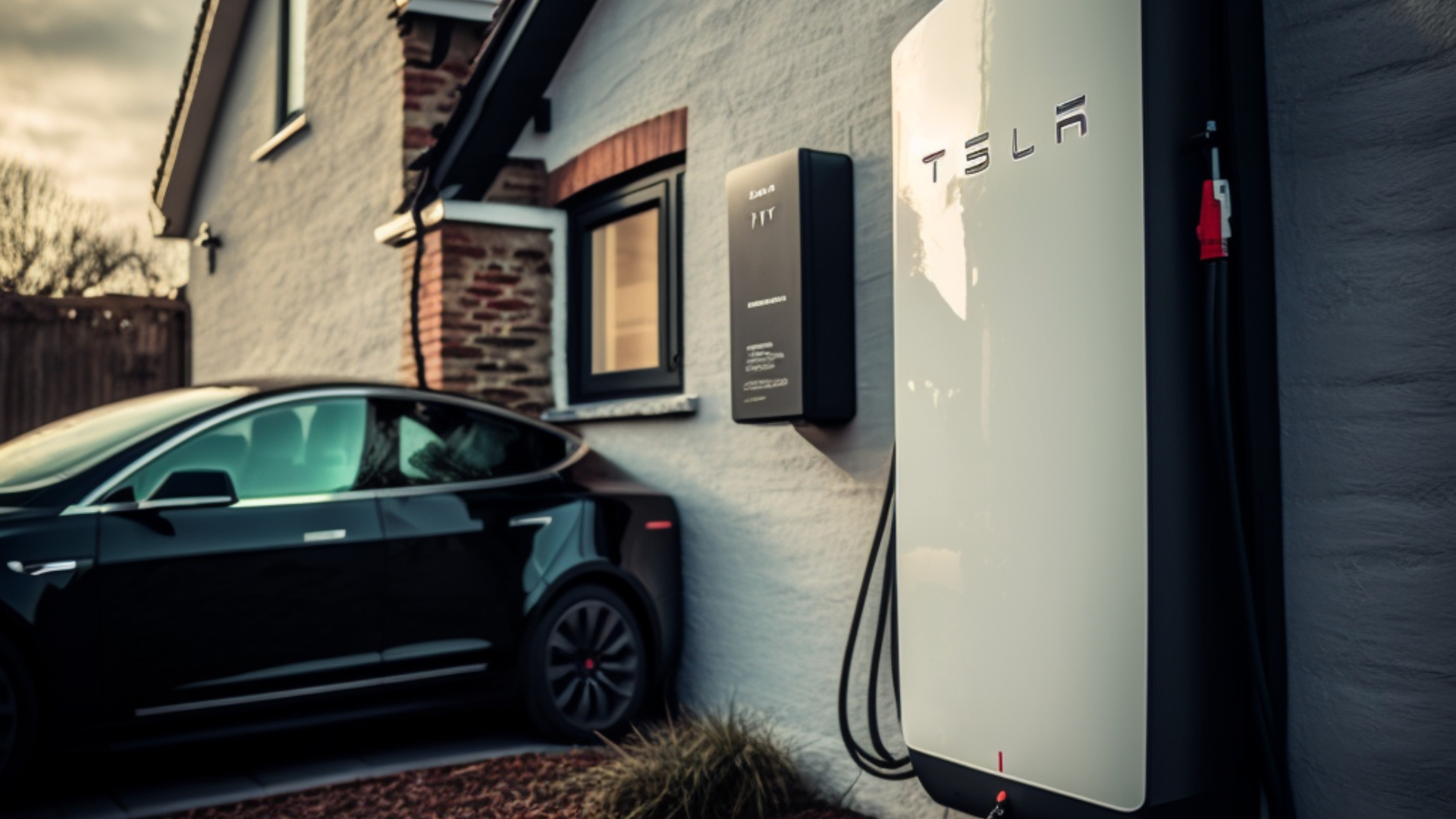Learn about Power Walls and how they are transforming the way we store and use energy in our homes. Discover the benefits, costs and installation process for this innovative technology.
If you’re not familiar with the term, let me explain. Powerwalls are cutting-edge energy storage systems that allow homeowners to store energy from solar panels or the grid for use when they need it most. They’re an exciting technology that’s been getting a lot of attention lately, and for good reason. We take a closer look at what Powerwalls are, how they work, and why they’re becoming so popular for electric vehicle owners.
What are Power Walls and How Do They Work
Power walls are an innovative and intelligent solution for storing excess energy generated by renewable sources, such as solar panels or wind turbines. They are a form of energy storage technology that can provide a range of benefits for households and businesses alike. In this article, we will explore what power walls are, how they work, and the advantages they can bring to your home or business.
Power walls are rechargeable lithium-ion batteries, much like the ones found in electric cars, that store energy from renewable sources. This energy can be used during periods of high demand, or when the renewable source is not generating power, such as at night or during cloudy weather. They are designed to be connected to a renewable energy source, such as a solar panel system, to store excess energy generated during peak hours for later use.
Power walls are generally compact in size and can be easily installed in homes or businesses. They can also be linked together to create larger storage systems for commercial or industrial use. The battery’s software monitors energy usage and production, ensuring that the system is always operating at optimal efficiency.
When there is a power outage, power walls can provide an immediate source of backup power, ensuring that critical systems and appliances can continue to operate until power is restored. This can be especially useful in areas prone to power outages, or for businesses that rely on an uninterrupted power supply.
In addition to providing backup power, power walls can also help households and businesses reduce their reliance on the grid and, as a result, lower their energy bills. When a renewable energy source generates excess energy, the power wall stores it for later use, which means that less energy needs to be purchased from the grid. This can result in significant cost savings, particularly as energy prices continue to rise.
Benefits of Power Walls for Homeowners
There are numerous benefits to using power walls in your home, including reducing your carbon footprint and saving money on your energy bills.
One of the primary benefits of power walls is that they can help reduce your carbon footprint. Most people in the UK use energy from the national grid, which is generated from fossil fuels. By using a power wall, you can reduce the amount of energy you use from the grid and rely more on renewable energy sources. This helps to reduce the overall carbon emissions associated with your home’s energy consumption, which is beneficial for the environment.
Another benefit of using a power wall is that it can save you money on your energy bills. By storing energy during off-peak hours, you can use it during peak hours when electricity rates are higher. This means you can reduce your reliance on the grid and avoid peak pricing, which can save you a significant amount of money over time. Additionally, some power walls are designed to detect power outages and switch over to stored energy, so you can avoid the costs associated with using a generator during an outage.
Power walls can also provide homeowners with greater control over their energy consumption. By storing energy during off-peak hours, you can use it when you need it most. This can be particularly beneficial for homeowners who have electric vehicles, as they can charge their vehicles using stored energy. Additionally, if you have solar panels installed, a power wall can help you make the most of your solar energy by storing excess energy generated during the day for use at night.

Cost of Power Walls: Is It Worth the Investment
Many homeowners are wondering if the cost of power walls is worth the investment. In this article, we’ll take a closer look at the cost of power walls and evaluate if it’s a worthwhile investment for homeowners.
Power walls are not cheap, and the cost varies depending on the model and features. On average, a single power wall can cost around £5,000 – £7,000, while a fully installed system with multiple power walls can cost over £10,000. While this may seem like a large investment, it’s important to consider the long-term savings that can be gained from having a power wall installed in your home.
One of the primary benefits of a power wall is that it can reduce your reliance on the grid. This means that you’ll be able to generate and store your own electricity, reducing your energy bills significantly. In fact, many homeowners have reported saving up to 50% on their energy bills after installing a power wall. Additionally, power walls can be used to store excess energy generated by solar panels, which can then be used during peak demand hours.
Another benefit of power walls is that they can provide backup power during power outages. This is especially important for homeowners who live in areas prone to severe weather conditions, such as hurricanes or blizzards. With a power wall, you can be sure that your home will have electricity during an outage, allowing you to continue with your daily routines without any disruption.
While the initial cost of a power wall may seem high, it’s important to remember that it’s an investment that can provide significant long-term savings. Homeowners can also take advantage of government incentives and tax credits to reduce the overall cost of installation. When considering the cost of a power wall, it’s important to evaluate the potential savings and benefits it can provide. For many homeowners, the investment is worth it, as it provides long-term energy savings and peace of mind during power outages.
How to Install Power Walls in Your Home
First, you will need to decide on the right power wall for your home. There are different types of power walls available with varying capacities and prices. You should consider the size of your home, the amount of energy you use, and your budget before deciding on a power wall.

Once you have decided on the right power wall for your home, you will need to find a qualified installer. A qualified installer will ensure that your power wall is installed correctly and safely. You can find a qualified installer by contacting the manufacturer or a local electrician.
Before the installation process begins, you will need to prepare your home for the power wall. This will involve finding a suitable location for the power wall, checking the electrical connections, and ensuring that there is enough space for the installation.
The installation process itself involves connecting the power wall to your home’s electrical system. This will involve installing an inverter, which will convert the DC power stored in the power wall into AC power that can be used by your home’s electrical system. Your installer will ensure that the inverter is installed correctly and safely.
After the installation is complete, you will need to set up the power wall. This will involve connecting the power wall to your home’s Wi-Fi network and configuring the settings to suit your energy needs. Your installer will guide you through this process and provide you with all the information you need to get the most out of your power wall.
Experts Weigh In: The Future of Power Walls in the UK
So, what does the future hold for power walls in the UK? We spoke to a number of experts to get their take on this exciting technology and its potential impact.
According to John Fielding, a spokesperson for the UK’s Energy Saving Trust, power walls are becoming more cost-effective as the price of solar panels continues to fall. “With the cost of solar panels decreasing and energy prices increasing, it’s becoming more and more financially attractive to invest in a power wall,” he says. “We’re likely to see a significant increase in the adoption of power walls as the technology becomes more affordable.”
Professor Richard McMahon from the University of Warwick’s Energy Research Group agrees, noting that the UK government’s push towards renewable energy sources is likely to further increase the popularity of power walls. “With the government setting ambitious targets for renewable energy, power walls are likely to play a key role in helping homeowners reduce their reliance on the grid,” he says.
However, while power walls are an exciting technology with many benefits, they are not without their challenges. One of the biggest challenges, according to Professor McMahon, is the issue of scale. “Power walls are great for individual homeowners, but we need to think about how we can scale this technology up to work on a community or even national level,” he says.
To overcome this challenge, some companies are exploring the idea of creating virtual power plants. These plants would be made up of thousands of interconnected power walls, which would work together to store and distribute excess energy to the grid. This would not only benefit homeowners, but it would also help to stabilise the grid and reduce the need for expensive upgrades.

How will this benefit EV users
One of the main benefits of Power Walls for EV users is that they allow for greater flexibility in charging schedules. With a Power Wall, EV owners can charge their vehicles during off-peak hours, when electricity rates are lower, and then use the stored energy to charge their cars during peak hours when rates are higher. This not only saves money but also reduces the load on the grid during peak hours.
In addition, Power Walls can also act as a backup power source for EV owners during power outages. This is especially important for those who rely on their electric vehicles as their primary mode of transportation. During power outages, EV owners with a Power Wall can continue to charge their vehicles and keep them on the road, allowing them to maintain their mobility and independence.
Power Walls also help to reduce the carbon footprint of EV users by enabling them to charge their vehicles with renewable energy. For example, by storing solar energy during the day and using it to power their vehicles at night, EV owners can significantly reduce their reliance on non-renewable sources of energy, which in turn reduces their carbon emissions.
Power walls are an innovative and practical solution for storing excess energy generated by renewable sources. They can provide a range of benefits for households and businesses, from reducing reliance on the grid to providing backup power during outages. As renewable energy continues to become more popular, power walls will undoubtedly play an increasingly important role in shaping the future of energy.

4 thoughts on “Tesla PowerWalls: Home Energy Storage”
Comments are closed.